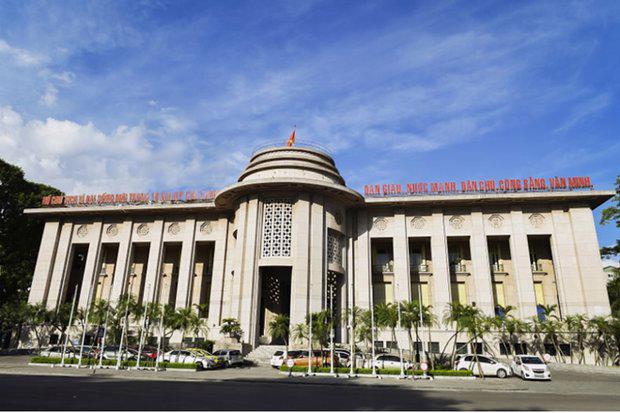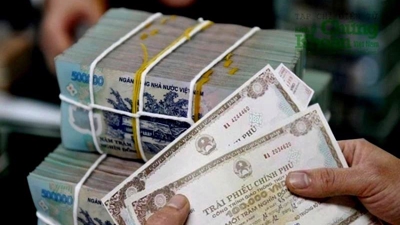SBV continues issuing T-bills totaling $1.2bln
The State Bank of Vietnam continued its second day of offering T-bills on March 12, attracting around $1.2 billion over the two days from the interbank market.

On March 12, the State Bank of Vietnam (SBV) continued its offering of 28-day Treasury bills (T-bills) with a total value of nearly VND 15 trillion (nearly $612 million).
Eight participants won bids with an interest rate of 1.4 per cent per annum.
In the previous session on March 11, the SBV sold T-bills worth VND15 trillion ($612 million) with the same interest rate to six participants.
This is the first time the central bank has offered T-bills since the end of last year. It drained money from the market twice last year with the issuance of T-bills, the first time at the beginning of the year and the second at the end of the third quarter.
Specifically, in February of last year, the SBV conducted a bond issuance campaign with a total scale of nearly VND400 trillion ($16.2 billion) in one month. The issuance at end of the third quarter had a scale of VND360 trillion ($14.6 billion).
T-bills issued by the SBV in these latest sessions have a maturity date of 28 days and were auctioned with interest rates. Information on these bills is related to banks through the SBV’s Trading Department for registration in the bidding process.
The winning banks then deposit money to purchase the bonds, and at the end of the term are repaid principal and interest, similar to a savings deposit.
Money attracted through T-bills will be injected back into the interbank market for 28 days after the bills are issued.
Injecting and withdrawing money through the bond channel are common operations of the central bank that affect cash flow on the interbank market, where banks borrow and lend to each other, and do not circulate in the general market.
Most experts believe that the recent issuance of T-bills by the SBV is due to the high level of liquidity in the market. Since the start of the year, credit activity has shown little signs of growth, sometimes even falling below 0 per cent, while capital mobilization also showed slow growth but was higher than credit.
Citing data from the SBV, experts said that as of the end of February, credit levels had decreased by about 1 per cent, while capital mobilization was estimated to be down by about 0.7 per cent. This has caused the banking system to overflow with capital, driving down interest rates on the interbank market.
On March 11, the overnight interbank interest rate fell to 1.17 per cent per annum, significantly lower than the peak on February 21 of 4.14 per cent and approaching the low maintained during the previous prolonged period of excess liquidity of around 0.14-0.15 per cent per annum.
The issuance of T-bills also helps drive up the interbank interest rate closer to the USD interest rate, thereby lowering the pressure on the VND/USD exchange rate.
At its latest meeting, the US Federal Reserve (US Fed) decided to maintain the current USD interest rate until at least the end of the second quarter of this year. The fact that it is maintaining high interest rates while Vietnam’s interest rates remain quite low will create exchange rate pressure.
Evidence of this can be seen in fluctuations in the exchange rate over recent times. Since the beginning of the year, the USD/VND exchange rate has increased by about 1.5 per cent.







